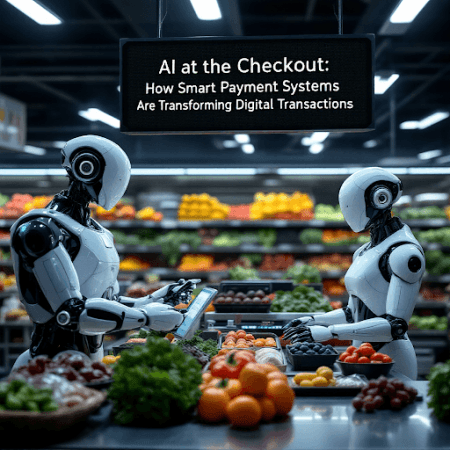
In this modern era, Priya Das, a technology researcher with a focus on financial systems and artificial intelligence, explores the transformative power of smart payment innovations. Her work investigates how intelligent digital infrastructure is redefining the future of payments.
The Rise of Personalized Payments
In an age where consumer expectations demand both speed and security, the fusion of artificial intelligence with payment systems is creating highly individualized and frictionless transaction experiences. AI-powered personalization no longer stops at targeted ads it now informs the way we pay. Through the seamless integration of behavioral, contextual, and financial data, modern systems are capable of recommending optimal payment methods in real time, adapting dynamically to user preferences, location, device, and context.
Neural Networks Behind Every Swipe
Beneath these seamless experiences lies a sophisticated multi-layered architecture. Deep neural networks process streams of transactional data, categorizing and predicting user preferences with remarkable precision. These models analyze thousands of transactions per second, offering suggestions tailored not just to purchase history, but also to behavioral cues like app usage and even time of day. Technologies like sequence-based classification and natural language processing enhance accuracy, raising recommendation relevance significantly.
Smarter Assistants in Your Wallet
Digital wallets are getting an upgrade. Smart payment assistants act as real-time financial advisors, using predictive analytics and natural language understanding to guide users through complex financial decisions. Whether it's avoiding fees, scheduling payments, or suggesting better alternatives, these assistants reduce user decision time while significantly boosting overall satisfaction. Their modular microservices design ensures scalable deployment, allowing them to deliver secure, conversational experiences across various platforms with minimal latency.
Machine Learning Optimizes Every Payment
Choosing the best payment method is no longer a guessing game. AI algorithms now calculate utility scores by weighing rewards, fees, and user habits down to variables like day-of-week spending patterns or geolocation. Hybrid models combining neural networks and decision trees offer up to 26.7% higher reward capture. Meanwhile, preference modeling ensures that suggestions align with evolving user behaviors, even accommodating first-time users through adaptive learning techniques.
Privacy Without Compromise
Amidst the innovation, privacy remains a core focus. Techniques like federated learning allow systems to learn from user data without storing it centrally. Differential privacy adds statistical noise to protect identities, and homomorphic encryption lets systems compute on encrypted data directly. These strategies offer robust safeguards, allowing for meaningful personalization while adhering to strict regulatory standards and preserving user trust.
Bridging Old and New
Implementing these intelligent systems isn't without challenges. Much of the global payment infrastructure is built on legacy frameworks that aren't designed for real-time, AI-enhanced operations. Adapter layers now serve as crucial translators, converting data formats and maintaining compliance across diverse systems. They also ensure fallback mechanisms are always in place so payments continue uninterrupted even if the AI component encounters issues.
Towards Ambient Commerce
The future of digital payments is moving toward ambient experiences, where transactions happen without conscious action. Cross-modal intelligence integrates voice, visuals, biometrics, and IoT to anticipate user intent. Whether it's a fridge initiating a grocery order or a user confirming a payment via voice, these systems aim to make checkout processes invisible. Smart homes and biometric wearables feed data into adaptive algorithms, creating frictionless commerce environments that respond to natural behavior.
In conclusion, as these technologies mature, the boundaries between consumer, device, and transaction blur. AI isn't just powering smarter payments, it's reshaping the financial interaction model. Priya Das underscores that this shift is more than technical; it reflects a broader evolution toward systems that understand, adapt, and respond with increasing intelligence. The path forward is one where payment decisions feel less like a task and more like an extension of intent.
















